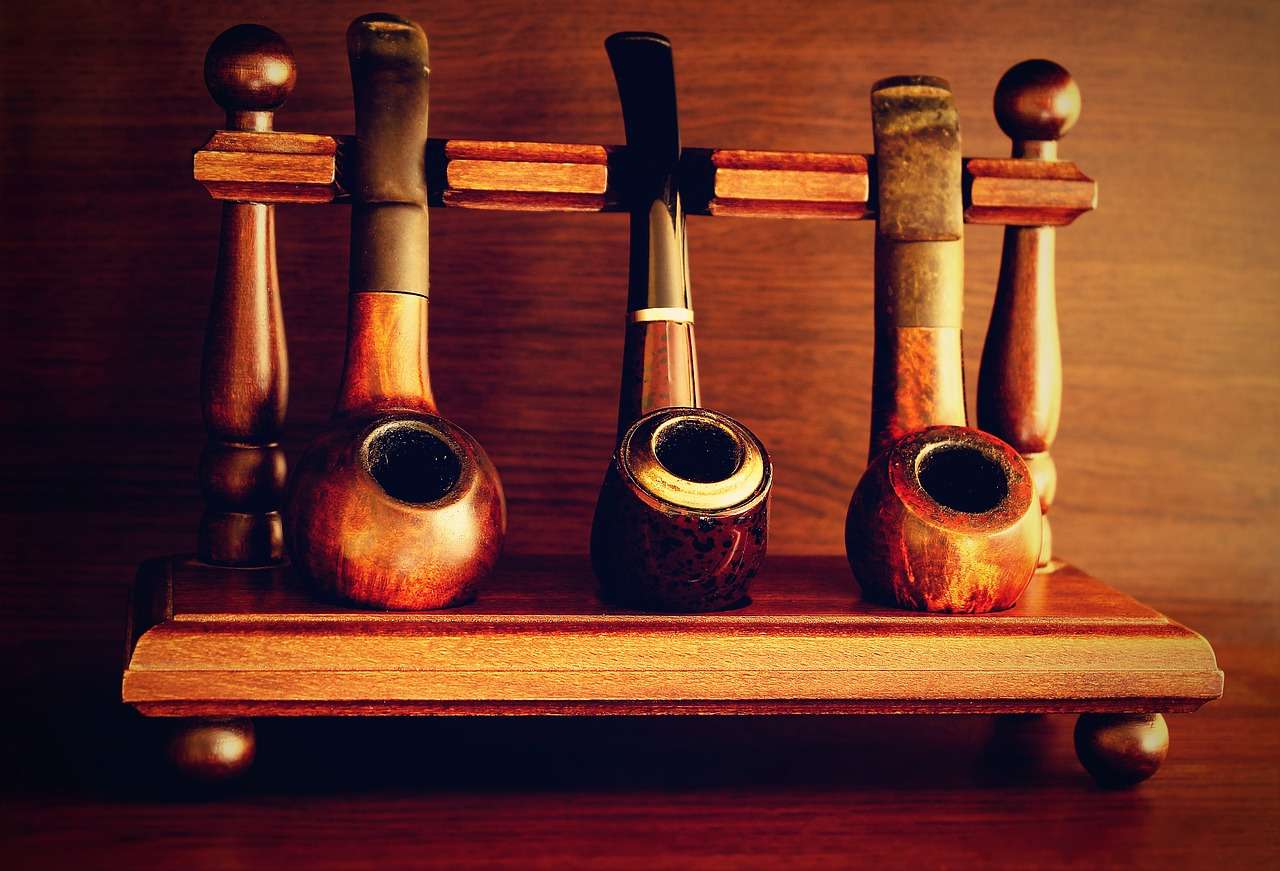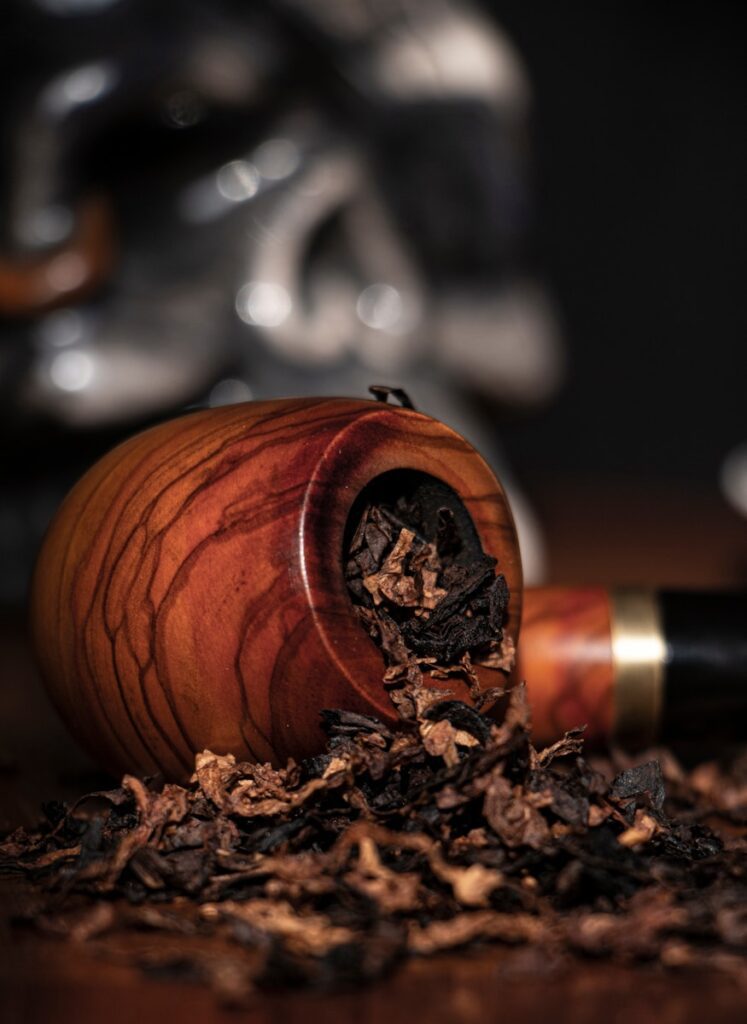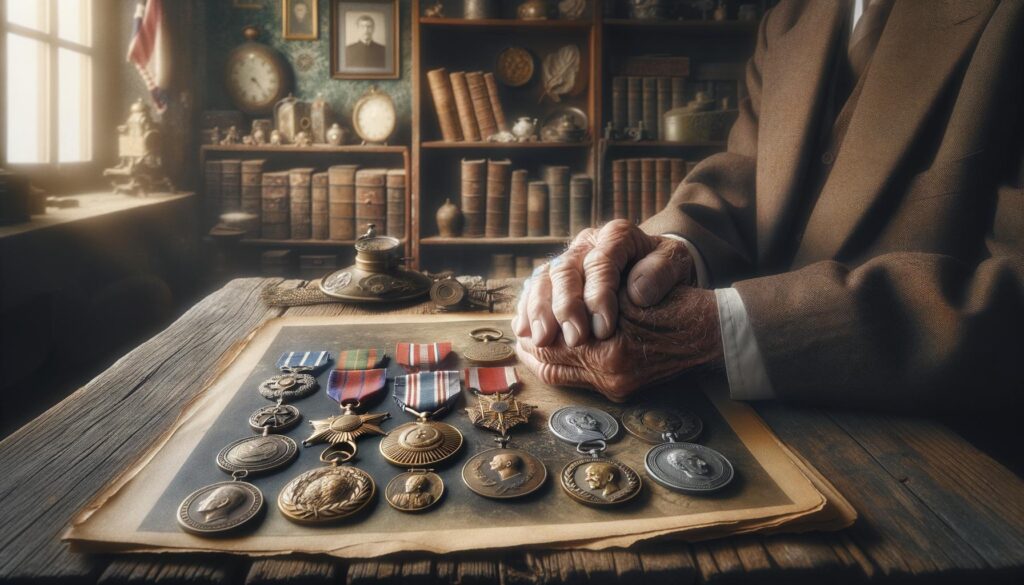Vintage Tobacco Pipe Collecting: Stories of a Bygone Era

The attraction to collecting these timeless pieces lies not only in their aesthetic appeal but also in the stories they carry within their carefully carved bowls and stems.
From the elegant designs of Meerschaum pipes to the rugged charm of briarwood creations, each type offers a unique glimpse into a bygone era.
Delve deeper to uncover the secrets of materials, authenticity markers, and maintenance rituals that will enrich your collection and elevate your appreciation for these exquisite artifacts.
History of Tobacco Pipes
So, how did the evolution of tobacco pipes unfold throughout history?
The evolution of tobacco pipes is a fascinating journey that intertwines with the cultural significance of different eras.
From the earliest known pipes used by Native Americans to the opulent designs favored by European nobility, the history of tobacco pipes is a tapestry of craftsmanship and cultural exchange.
The evolution of design in tobacco pipes reflects the changing tastes and technological advancements of each era. In ancient times, pipes were simple and utilitarian, often made from materials like clay or wood.
As societies progressed, so did the intricacy of pipe designs.
For instance, during the Renaissance period, ornately carved meerschaum pipes became popular among the elite, showcasing exquisite craftsmanship and attention to detail.
The cultural significance of tobacco pipes cannot be understated. In many societies, pipes were not just smoking instruments but symbols of status, tradition, and ritual.
For example, in some Native American tribes, the act of smoking a ceremonial pipe was a sacred tradition that held deep spiritual meaning. Similarly, in Victorian England, the pipe became a fashion statement among gentlemen, signifying sophistication and refinement.
Understanding the evolution of tobacco pipe design and its cultural significance provides valuable insights for collectors interested in vintage pieces.
Each pipe tells a story, not just of its own creation, but of the society that produced and cherished it.
Check out tobaccopipes.com for a detailed look at the history of the tobacco pipe.
Types of Vintage Pipes
The rich history of tobacco pipes lays the foundation for exploring the diverse and intriguing types of vintage pipes available to collectors today.
When it comes to pipe shapes, there is a wide array to choose from, each with its own unique characteristics.
Some popular pipe shapes among vintage collectors include the Billiard, known for its classic cylindrical bowl and straight stem; the Dublin, featuring a tapered bowl and a slightly bent stem; and the Apple, which has a round bowl and a shorter stem. Exploring the different pipe shapes can be a fascinating journey into the craftsmanship and artistry of vintage pipe making.
Famous pipe makers have left their mark on the world of vintage pipes, creating pieces that are highly sought after by collectors.
Artisans like Dunhill, Peterson, and Charatan are renowned for their exceptional craftsmanship and innovative designs.
Dunhill pipes, for example, are known for their superior quality and timeless elegance, making them a favorite among collectors. Peterson pipes, on the other hand, are celebrated for their patented System design, which provides a cool and dry smoke.
Charatan pipes are prized for their hand-carved finishes and attention to detail, showcasing the skill and dedication of the craftsmen behind these vintage treasures.
Collecting vintage pipes allows you to appreciate the artistry of these famous pipe makers and own a piece of tobacco pipe history.
Materials Used in Pipes
When considering vintage tobacco pipes, the materials used in their construction play a crucial role in both the aesthetics and smoking experience. Different materials can impact the flavor, durability, and overall appeal of a pipe. Here are some key points to consider:
- Briar Wood: Briar wood is one of the most popular materials used in pipe making due to its heat resistance and natural beauty. Pipes made from briar wood often develop a unique patina over time, enhancing their visual appeal. The porous nature of briar wood also helps in absorbing moisture, resulting in a drier smoking experience.
- Meerschaum: Meerschaum, also known as sepiolite, is a mineral that is popular for its porous and heat-resistant properties. Meerschaum pipes are prized for their ability to absorb tars and nicotine, providing a cleaner smoking experience. These pipes are often carved into intricate designs, showcasing artisan craftsmanship.
- Clay: Clay pipes have a long history and are known for delivering a pure tobacco flavor. While more fragile compared to other materials, clay pipes are valued for their simplicity and elegance. They are often adorned with unique designs, reflecting the creativity of skilled artisans.
The choice of material in vintage tobacco pipes not only influences their appearance but also affects the smoking characteristics, making it an essential factor to consider when building a collection.
Identifying Authenticity
Considering the materials used in vintage tobacco pipes is essential for authenticating their origins and craftsmanship.
When delving into the authentication process, it’s crucial to be aware of common fakes that may deceive even seasoned collectors.
Some fraudulent pieces are cleverly crafted to mimic the appearance of genuine vintage tobacco pipes, making it challenging for the untrained eye to spot the differences.
To navigate through this complexity, seeking expert opinions can be invaluable.
Consulting with experienced collectors, visiting reputable antique shops, or engaging in online forums dedicated to vintage tobacco pipes can provide insights that aid in distinguishing between authentic pieces and replicas.
Try the group Tobacco Pipes on Facebook. They’ve got over 9 thousand members with a wealth of knowledge of all things tobacco pipes!
Also, over at Reddit r/Pipetobaccoo offers a thriving community that’s passionate about tobacco pipes.
These platforms offer a wealth of knowledge and expertise that can help you refine your understanding of what to look for in a genuine vintage tobacco pipe.
When examining a potential addition to your collection, pay close attention to the craftsmanship, materials, and overall condition.
Authentic vintage tobacco pipes often showcase intricate details and fine craftsmanship that set them apart from mass-produced imitations. By honing your ability to discern these characteristics, you can develop a discerning eye that is essential for identifying authentic pieces.
Remember, in the world of vintage tobacco pipes, knowledge is power, and seeking guidance from experts and fellow collectors can enhance your collecting experience.
Here is a brilliant article at melodia.am where they go into detail about spotting the difference between genuine and fake pipe purchases.
Cleaning and Maintenance Tips
For effective upkeep of your vintage tobacco pipes, implementing proper cleaning and maintenance techniques is crucial to preserve their condition and longevity.
Cleaning techniques play a significant role in maintaining the integrity of your pipes while also ensuring they continue to provide an enjoyable smoking experience.
Here are some essential tips to help you keep your vintage tobacco pipes in top shape:
- Regular Cleaning: Make it a habit to clean your pipes after each use. Use pipe cleaners and a gentle pipe cleaning solution to remove any residue or build-up inside the pipe. This will prevent clogs and maintain optimal airflow.
- Avoid Harsh Chemicals: When cleaning your vintage tobacco pipes, steer clear of harsh chemicals that can damage the finish or alter the patina. Opt for mild cleaning solutions specially designed for tobacco pipes to preserve their original look.
- Preserving Patina: The patina on vintage tobacco pipes adds character and charm. To preserve this unique finish, avoid excessive polishing or scrubbing. Instead, gently wipe the exterior with a soft cloth to maintain the patina while keeping the pipe clean.
Displaying Your Collection
To showcase your collection of vintage tobacco pipes effectively, consider utilizing display cases or shelves to highlight each piece’s unique craftsmanship and historical value.
Creative storage ideas can include mounting pipes on a pegboard, arranging them on decorative trays, or even using antique cabinets with glass doors to showcase your collection while keeping them safe from dust and damage.
Organization is key when displaying your vintage tobacco pipes. Sort them by era, material, or style to create a visually appealing display. You can also group pipes with similar characteristics together to highlight the differences and similarities between them.
Utilizing unique display methods such as backlighting or incorporating themed backgrounds can add a touch of elegance to your collection.
Here are some collectible storage ideas on Etsy that may apply to your pipe collection!
Showcasing techniques like using risers to create depth or incorporating mirrors to give the illusion of a larger collection can make your display more dynamic and visually interesting. Don’t be afraid to experiment with different arrangements until you find one that truly highlights the beauty and uniqueness of each pipe.
Resources for Finding Pipes
To expand your collection of vintage tobacco pipes, it is essential to explore various resources where you can find unique and intriguing pieces with historical significance. Here are some valuable avenues to consider:
- Antique Shops: Antique shops are treasure troves for vintage tobacco pipes. Visit local antique stores or participate in antique fairs to discover hidden gems that hold historical value. Engaging with knowledgeable antique dealers can also provide insights into the history and craftsmanship of different pipe styles.
- Estate Sales: Estate sales offer a unique opportunity to acquire vintage tobacco pipes from personal collections. These sales often feature a diverse range of items, including pipes that belonged to individuals with a passion for smoking. Attend estate sales in your area or explore online listings to uncover rare and well-preserved pipe specimens.
- Pipe Clubs and Forums: Joining pipe clubs or online forums dedicated to pipe enthusiasts can connect you with a community of like-minded individuals who share your passion for vintage tobacco pipes. These platforms often facilitate buying, selling, and trading activities, allowing you to source pipes directly from other collectors.
- The two best options for finding vintage tobacco pipes regularly are Etsy and Ebay. Check out their current listings to get an idea of pricing in the current market and to find a bargain!
- Click HERE for Etsy (My favourite!) Or click the image below:

- HERE for eBay (or click on the image below)

Conclusion
In conclusion, collecting vintage tobacco pipes is a fascinating hobby that allows you to explore the rich history and craftsmanship of these unique smoking instruments.
By understanding the different types of pipes, materials used, and how to identify authenticity, you can build a valuable collection that brings joy and satisfaction.
Remember to regularly clean and maintain your pipes, display them proudly, and continue to explore resources for finding new additions to your collection.



